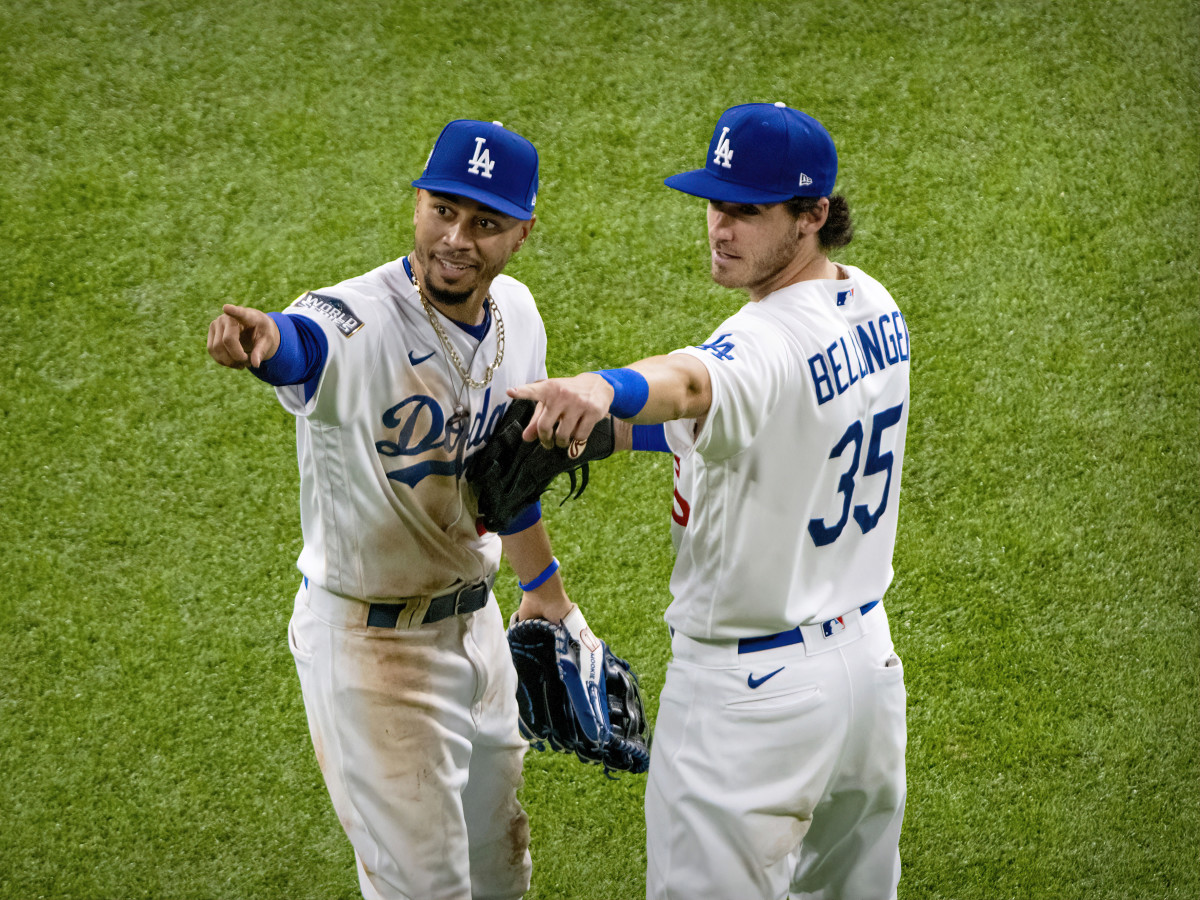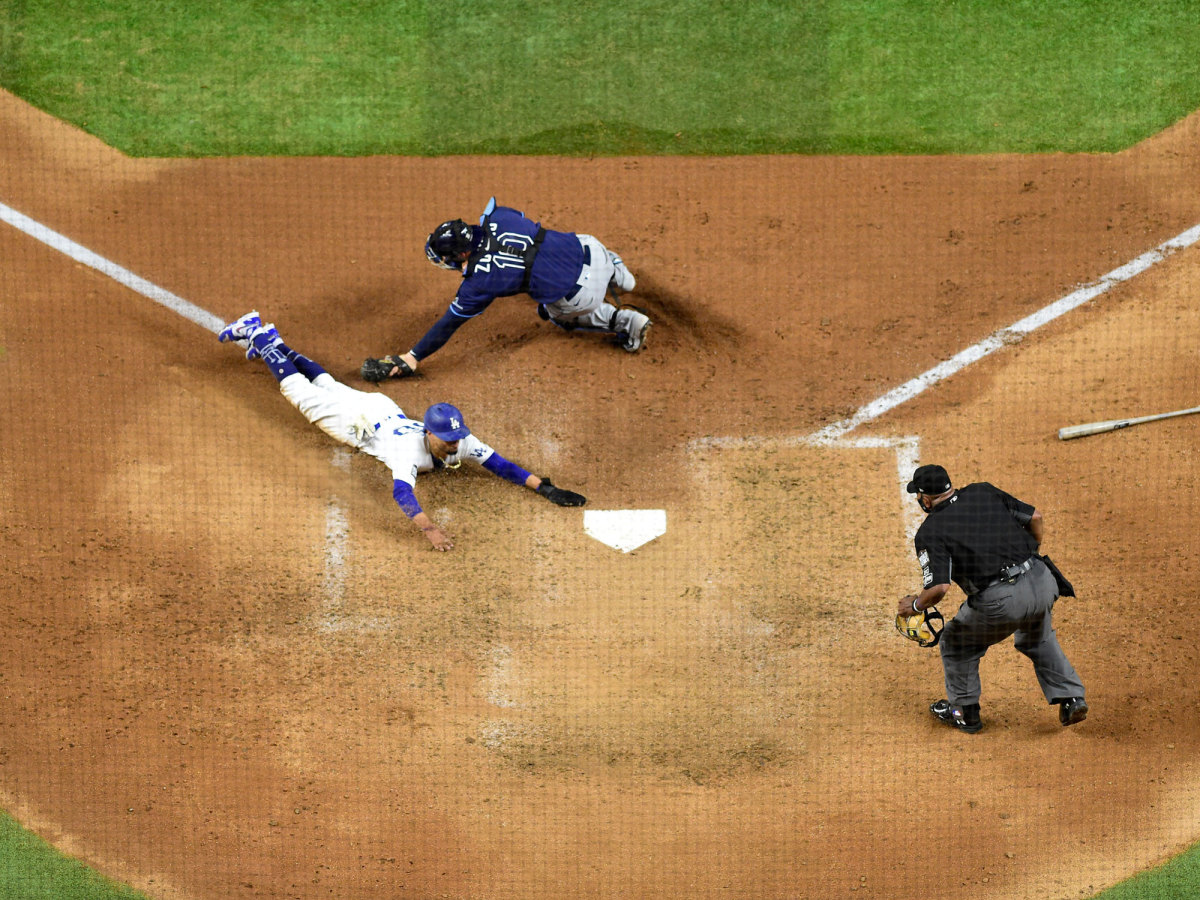How Mookie Betts Set the Dodgers on a Championship Path
It’s easy to assume that Mookie Betts fit in with the Dodgers right away, but the truth is that he didn’t. After an offseason of trade rumors, he arrived at Camelback Ranch in February and immediately faced a few challenges: He didn’t know where the bathroom was. All his gloves were trimmed in Red Sox scarlet. And he didn’t entirely like what he saw from his new teammates.
Los Angeles had been to the World Series twice in the previous three years. It had lost both times. Betts thought he might be able to do something about that.
Eight months later, Betts and the Dodgers hoisted the commissioner’s trophy. For the past half-decade, L.A. has been one of the best teams in baseball. But it was only when the club added Betts that it achieved its goal, which is why he's earned Sports Illustrated's Player of the Year honor. Betts often made his impact incrementally, but three moments especially set the Dodgers on their path to glory.
Before the first full-squad workout, Betts asked manager Dave Roberts if he could address the team. “I know I’m new here,” the right fielder began. But he had noticed a lackadaisical approach. He explained how the 2018 Red Sox—who beat the Dodgers in the World Series—had taken each drill with a sense of urgency. He suggested that L.A. players fine one another for misplays.
First base coach George Lombard beamed as he listened. He had managed Betts in rookie ball in 2011 and served as the Red Sox’ minor league outfield and baserunning coordinator from ’13 through ’15. He remembered Betts as a kid who begged to play but shied away from speaking publicly.

“I was super proud of him,” says Lombard, now the Tigers’ bench coach. “When you have those types of conversations, you have to hold yourself accountable, because now all those fingers are pointing out at you, because you’re calling people out on what it takes to be a champion.”
Even after he signed a 12-year, $365 million in July, Betts’s energy never faltered. He hit .292 and slugged .562. He led the NL in Baseball Reference’s version of WAR (3.6) and finished second in MVP voting. He ran every sprint as if he were being chased. He showed up early for work at the ballpark nearly every day, and he brought teammates with him. He talked hitting with catcher Austin Barnes. Betts took infield ground balls, just for fun, with third baseman Edwin Ríos. By the end of the season, half the team was out there with them.Watch ML games online all season long with fuboTV:
Even after he signed a 12-year, $365 million extension in July, Betts’s energy never faltered. He hit .292 and slugged .562. He led the NL in Baseball Reference’s version of WAR (3.6) and finished second in MVP voting. He ran every sprint as if he were being chased. He showed up early for work at the ballpark nearly every day, and he brought teammates with him. He talked hitting with catcher Austin Barnes. Betts took infield ground balls, just for fun, with third baseman Edwin Ríos. By the end of the season, half the team was out there with them.
“I just have never seen a superstar player be as engaged as Mookie,” says Roberts.
Six months later after his first speech, Betts stood before his team again. Police in Kenosha, Wis., had just shot a Black man named Jacob Blake, and athletes across sports were walking out of games. In 2016 Betts, who is Black, had said he did not agree with players who knelt during the anthem to protest police brutality, but now he felt differently. He had knelt on Opening Day. And now he felt he could not play.
That was a lonely place to be. Betts is a four-time All-Star and the 2018 AL MVP. But he has always preferred to lead by example. Now here he was, at his most vulnerable, before a group of people he had known only a few months—and mostly through masks. He said that he did not expect them to follow his lead. But secretly he hoped they would.
“It’s one of those moments where a team can really come together—or go a different direction,” says Lombard.
Clayton Kershaw, the longest-tenured Dodger and the team’s leader, spoke up. If he doesn’t think we should play, he said, we shouldn’t play.
They sat out that night. “I’ll always remember this,” Betts said afterward. “I’ll always remember this team had my back.”
But the moment they loved him the most, Betts wasn’t standing, and he wasn’t talking. He was reaching for home plate in the fifth inning of Game 1 of the World Series, and then he was pumping his fist as umpire Laz Díaz called him safe. With the Dodgers up 2–1 in a tense pitching duel, Betts had led off the frame with a walk, swiped second and then been the front end of a double steal. Now, with the infield in, Max Muncy bounced a ball to first base. Betts broke for home and beat the throw by inches. L.A. won 8–3 and never really looked back.

They won the series in six. Betts hit a home run to finish that one off, of course.
He hit .269 with two home runs and three steals in the World Series. His play helped relieve tension, as did his attitude: The players’ families gathered in suites along the right field line. When the Dodgers were on defense, Lombard stared disbelievingly as Betts conducted full conversations with his partner, Brianna, and daughter, Kynlee, between pitches, then locked back in before the play began.
“It’s amazing how much more relaxed every player was when they took the field,” Lombard says. After years of wondering how they would fail this time, these Dodgers knew they were the best team in the sport.
And all the way through the World Series, if someone bobbled a ball during pregame fielding practice, his teammates would remind him: “That’s 20 bucks!” Betts changed himself to fit the Dodgers. And they changed themselves to fit him.
